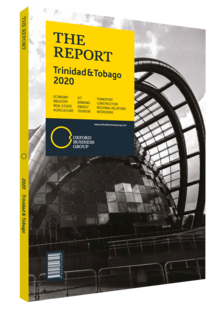Mark Loquan, President, National Gas Company (NGC) of Trinidad and Tobago: Interview

Interview: Mark Loquan
To what extent did the sector develop in 2019, and what direction will it take in 2020?
MARK LOQUAN: In 2019 there were improvements in gas production and related petrochemicals exports, but commodity prices declined. Free-on-board Caribbean prices for ammonia stood at $211 per tonne, down 24% from the 2018 average, while US spot methanol prices stood at $297 per tonne, also down 25% from 2018.
Though domestic gas production in 2019 remained relatively unchanged from 2018 levels, there was a significant improvement when compared to 2016 levels. Following the steady decline in production levels between late 2010 and 2016, there was a marked improvement from the low of 3.2bn standard cu feet per day (scfd) in 2016 to the 2019 average of 3.7bn scfd – with a peak of 3.9bn scfd in February. Production from new fields, enhanced recovery techniques, the de-bottlenecking of systems and the entry of an agile new upstream player have all contributed to the stabilisation of supply. Recent announcements regarding new gas discoveries bode well for 2020 and beyond; however, we remain cautiously optimistic that supply will be strengthened, especially given the volatility we have experienced over the past few years.
What is the importance of regional integration in fostering growth in the natural gas market?
LOQUAN: The Caribbean region relies heavily on petroleum products to meet energy needs, but consumption patterns are changing due to climate change mitigation imperatives. Natural gas will assume greater importance in the energy mix, but many islands will need support to transition their markets. Many do not have the requisite infrastructure or demand to make liquefied natural gas (LNG) importation economically feasible. Collaboration will therefore be necessary to grow the market across the region. Working with stakeholders to provide solutions that could make LNG more accessible to smaller Caribbean markets – such as outfitting Atlantic LNG to load small-scale LNG ships that could successfully dock on smaller islands – is critical. Investing in infrastructure projects across the region to help build LNG capacity and demand is something that we are keen to explore.
How has T&T’s plan to have 10% green electricity generation by 2021 progressed?
LOQUAN: The T&T Electricity Commission (T&TEC) has identified areas on the T&TEC grid system for renewable energy (RE) integration and the maximum capacity that could be accommodated at each integration point. T&TEC estimates that 150 MW of grid-connected RE can be accommodated without a material degradation of system security or unacceptable erosion in efficiency. Accordingly, and in line with the government’s RE target, the Ministry of Energy and Energy Industries (MEEI) issued a request for proposals for utility-scale solar and/or wind installations in 2018. An announcement for the successful bidder is still to be made public.
National Energy, a subsidiary of NGC, has been working closely with the MEEI on evaluating potential RE projects. NGC has decided to focus on reducing electricity demand altogether by championing energy efficiency initiatives. Notably, working with stakeholders on the Cabinet-appointed Committee for the Development of a National Energy Conservation and Energy Efficiency Action Plan for T&T is a key initiative. NGC has been instrumental in formulating the proposed plan, from which recommendations have already been enacted.
In what ways has the Venezuela crisis affected T&T’s energy development strategy?
LOQUAN: Geopolitical risk affects countries and projects worldwide. Due to our proximity to South America, the Venezuelan situation may indeed affect us, particularly since we are in the middle of negotiations for the Dragon project, and the sanctions on Venezuelan government officials and the management of its state oil company have made progression more challenging.
You have reached the limit of premium articles you can view for free.
Choose from the options below to purchase print or digital editions of our Reports. You can also purchase a website subscription giving you unlimited access to all of our Reports online for 12 months.
If you have already purchased this Report or have a website subscription, please login to continue.

